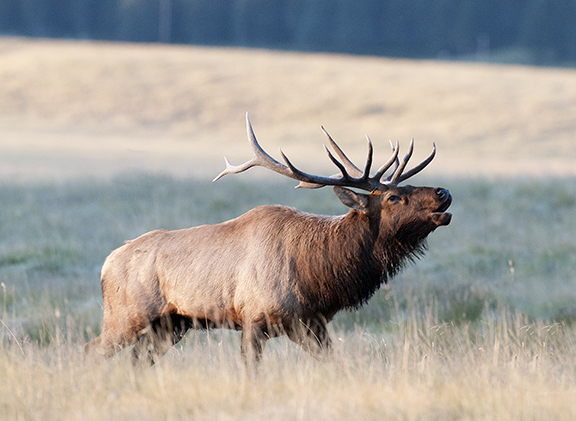
Across Ruidoso, you can often hear the bugles of elk rolling through canyons, even before you catch a glimpse of the massive creatures. Once you do though, you can’t help but appreciate the moment and maybe snap some photos. But remember, these beautiful animals are still wild! Respect their boundaries and enjoy their presence from a safe distance.
Here are 3 interesting things you probably didn’t know about the elk of New Mexico that you can share next time you encounter a herd.
The Native Elk of New Mexico Were Hunted to Extinction
Through a combination of natural predators, tribal hunting and the final blow of Western exploration and development, both the Merriam’s Elk native to Ruidoso and the Rocky Mountain Elk of northern New Mexico were completely eradicated from the state by 1906 and 1909 respectively.
Unfortunately, the Merriam’s Elk subspecies had no other remaining habitats and were driven to extinction. The Rocky Mountain Elk on the other hand were considered “extirpated,” or driven out of the area, as they had many other pockets of thriving herds.
Beginning in 1910, Rocky Mountain Elk from Yellowstone National Park were brought to ranches to begin reintroduction. By 1934, their population had recovered to approximately 4,000 elk across the state. With more regulated hunting and extirpation of their primary predator the gray wolf, elk population steadily climbed to 8,000 in 1958, 12,000 in 1967, and by 1999 it grew to an estimated 72,000 across the state. Today, there are an estimated 102,000 elk living throughout New Mexico.
The Life Cycle of Elk
Mating season usually occurs in September, but has been recorded to last into November. During this time, dominant bulls will begin bugling to attract cows and gather as many as they can protect from weaker satellite bulls. The bugles are an unmistakable mix of high pitch whistles and deep grunts. The bulls will typically ignore feeding during the rut, solely focused on breeding, until being forced to shift their focus and restore body fat before winter turns.
The cows leave the herd to give birth and rejoin about two weeks later when the calf is capable of avoiding predators on its own. Calves are usually born between May and June, weighing 30 to 40 pounds with white spotted coats that allow them to camouflage. They have virtually no scent and avoid predators by lying still in high grass or vegetation.
Their white spots fade by the end of summer and by six months old a calf is as large as an adult white-tailed deer. By three years old, the elk will leave the area they were born in, though many females are tolerated by the adult cows and will remain.
Elk Population Management
With the primary predators of elk having been mostly driven out, hunting regulation now plays a major part in properly managing population across the state. This regulation breaks down into three types of zones: Primary, Secondary and Special Management Zones.
Primary Management Zones include most natural habitats where elk herds are closely monitored, with the total number of game licenses being adjusted to maintain a healthy population. 84% of these licenses are distributed to New Mexico residents, 10% to outfitters, and only 6% to non-resident hunters.
Secondary Management Zones include non-core habitats, ranches, and Native American Reservations, including the Mescalero Apache Tribe. The elk population in these zones are managed by the land owners with no specific population goals set by the Department of Game and Fish. Elk licenses in these zones are purchased “over-the-counter” via the ranch or reservation in which the hunt would take place. As such, these hunts are more accessible to non-resident hunters.
Special Management Zones are generally private property that falls outside of both Primary and Secondary management zones with a set number of elk licenses being allowed to each private ranch.
Whether you’re coming to town to enjoy the weather, hike any of the beautiful trails throughout Ruidoso, or maybe even planning your next hunt, there’s a good chance you’ll run across a herd.
And if there’s only one thing you take away from this post, let it be this:
These beautiful creatures are still wild animals, even if you catch them walking through town. Admire them, appreciate them, take pictures of them, but do it from a safe distance!
We offer a variety of condos and townhomes for rent where you can often find a small herd of elk roaming through our beautiful grounds.
Feel free to reach out to our staff at 1(800)284-0294 with any questions you may have about your future stay with us.



